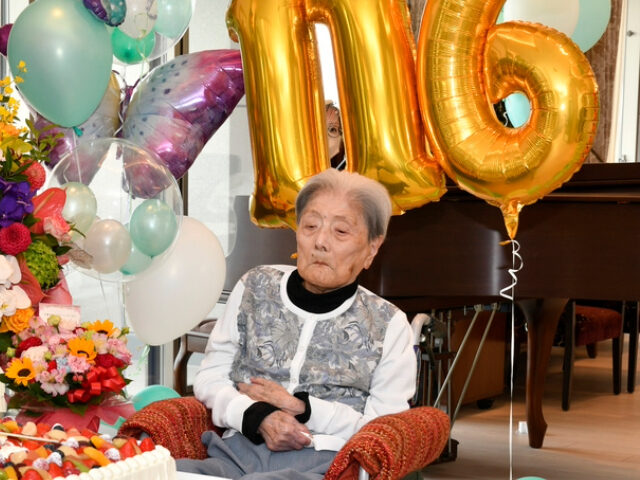Demographic data that the Japanese government released on Tuesday reveals that Japan has a record-high population of more than 95,000 people aged 100 or over.
According to the Japanese Health Ministry, there were 95,119 centenarians as of September 1, 2024, an increase of 2,980 since 2023.
Of these 100-year-olds, 83,958 were women, while just 11,161 were men. One of the women is Tomiko Itooka, currently the oldest person in the world at 116 years of age. She received her Guinness Book of World Records certificate on Monday, which was a Japanese holiday known as Respect for the Aged Day.
Tomiko was born on May 23, 1908, making her 32 years old when Japan entered World War II. According to the Guinness Book of World Records, she is the twenty-third oldest person in all of recorded human history.
The oldest man in Japan, 110-year-old Kiyotaka Mizuno, told reporters on Monday he has no idea why he has lived so long. His typical day includes getting up at 6:30 a.m., putting away three meals “without being picky about his food,” and listening to sumo wrestling on the radio.
Stepping back from the century-old citizens, Japan now has 36.25 million citizens over 65 years of age, making up 29.3 percent of the population — a global high for countries with large populations.
Although such a massive population of century-olds is a noble achievement in a culture that holds such respect for the elderly, it is also a harbinger of demographic disaster for Japan. The large number of elderly people is unfortunately balanced by an inadequate and shrinking number of young workers to generate income for social programs.
The overall Japanese population has declined steadily for the past 13 years, dropping by another 595,000 in 2024. Births for the first half of 2024 were down by six percent compared to 2023, hitting the lowest level since Japan began publishing birth rates in 1969. The fertility rate is now 1.2 births per woman, which is better than South Korea’s dismal 0.78 per woman but still well within crisis levels.
Older people are remaining in the workforce for longer to make up for the shortage of young people, putting a record 9.14 million elderly Japanese on company payrolls in 2024. Japanese officials predict that even this stopgap measure to prop up the workforce will begin failing within the next decade.
The Japanese government has identified the decline and aging of its population as an urgent “now or never” crisis, as Prime Minister Kishida Fumio put it in January 2023, but, as with other Asian “tiger” economies facing demographic decline, nothing seems to be working. Like most of its neighbors, Japan is resistant to using mass migration to shore up its workforce, but no amount of economic stimulus or child-care benefit incentives has been enough to persuade Japanese youth to have children in the numbers required for population growth.
A report published by a Japanese demographic symposium in April predicted that if population decline continues at the current rate, 744 of Japan’s 1,729 municipalities will simply “vanish” by 2050. By 2100, the total Japanese population will be roughly half what it was in 2000.

COMMENTS
Please let us know if you're having issues with commenting.